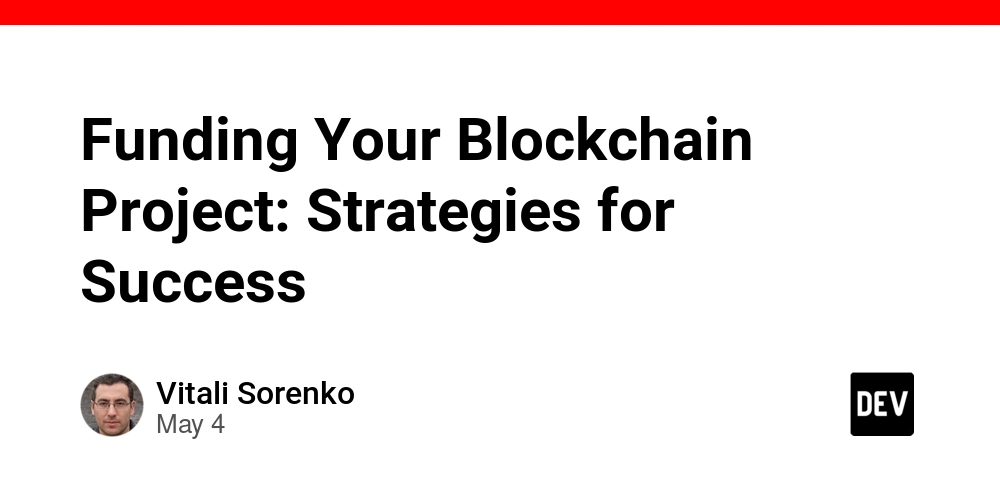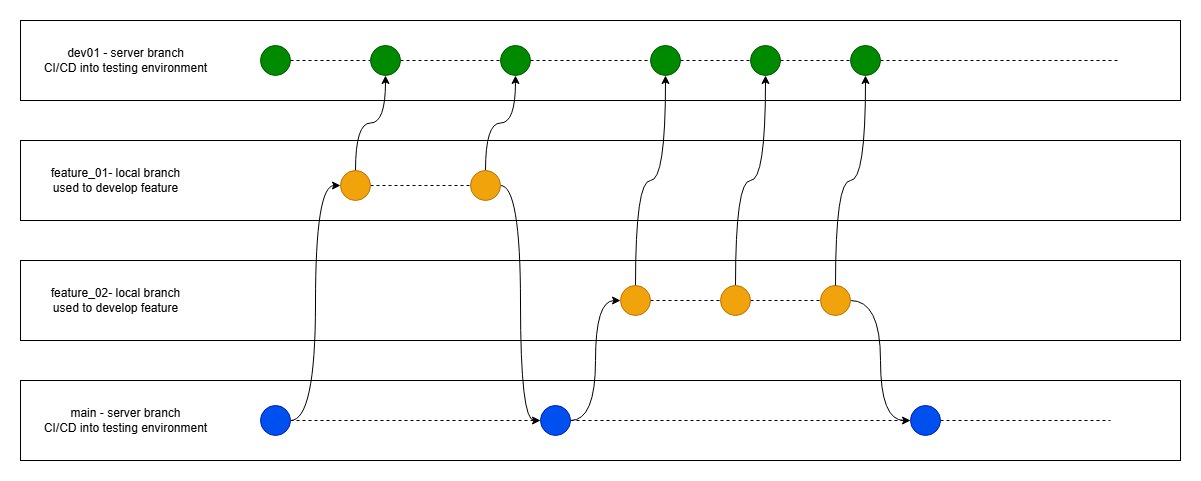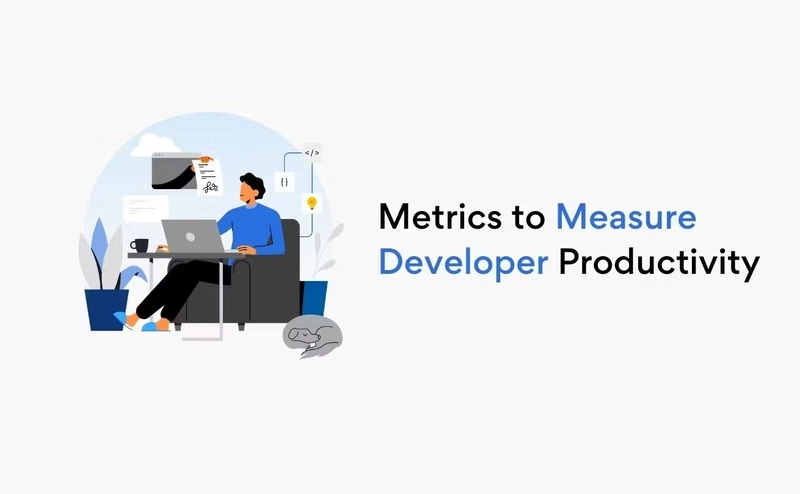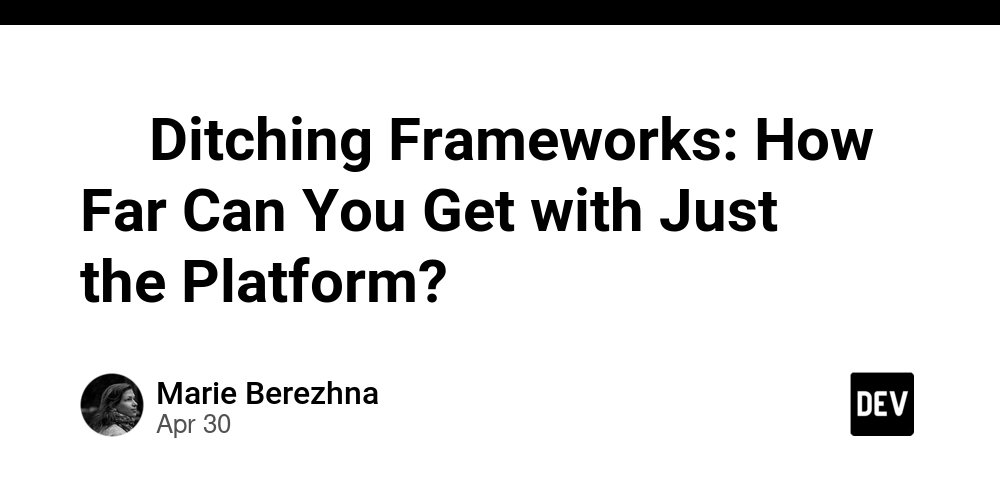Funding Your Blockchain Project: Strategies for Success
Abstract This post provides a comprehensive, structured guide to funding your blockchain project, detailing various opportunities such as ICOs, STOs, IEOs, venture capital, angel investment, crowdfunding, and grants. We discuss the history, definitions, and technical context behind each funding method. In addition, this post highlights strategies for building a compelling pitch, fostering trust and transparency, and navigating regulatory landscapes. With practical use cases, a detailed comparison table, and bullet lists, this guide is designed in an accessible yet technical tone for both industry professionals and newcomers alike. Introduction Blockchain technology continues to redefine how we manage data, finances, and trust in decentralized systems. Securing funding can be as daunting as implementing breakthrough technology. In today’s fast-paced environment, blockchain project funding is essential for bringing innovative ideas to life. This post explores various funding avenues—from Initial Coin Offerings (ICOs) and Security Token Offerings (STOs) to venture capital and crowdfunding—and provides practical guidelines to help you succeed in this competitive landscape. The post draws information from the original article, How to Fund a Blockchain Project, and supplements it with additional context and insights from industry experts. We aim to give you a solid background, core strategies, and actionable steps to effectively finance your project. Background and Context Blockchain is not just a buzzword; it is a revolutionary technology enabling decentralized, immutable, and transparent systems. Funding these projects requires innovative thinking and a clear understanding of the ecosystem. Here are some historical and definitional aspects to set the stage: History: Blockchain technology emerged with Bitcoin in 2009 and has since evolved to include numerous platforms like Ethereum, which introduced smart contracts. Funding models began with ICOs in 2013-2014 and have grown to include regulated models like STOs and IEOs. Definitions: ICO (Initial Coin Offering): A fundraising model where new tokens are issued in exchange for established cryptocurrencies. Learn more about ICOs. STO (Security Token Offering): A regulated process that issues tokens subject to securities laws, providing more legal clarity. Understand STOs further. IEO (Initial Exchange Offering): Similar to an ICO, but the token sale is hosted by a cryptocurrency exchange, which provides an added layer of trust. Dive into IEOs. Ecosystem Context: Modern blockchain projects leverage a mix of technical innovation, community engagement, and regulatory prudence. Investors are increasingly looking for projects that are not only groundbreaking technologically but also well-planned from a business and funding perspective. Core Concepts and Features Securing funding is more than simply raising capital—it’s about crafting a vision, building a robust network, and ensuring regulatory compliance. Below, we break down the primary funding strategies and their key features: Funding Strategies Overview Funding Option Description Key Benefit Initial Coin Offerings (ICOs) Raising funds by issuing cryptocurrency tokens to global investors typically in exchange for established cryptocurrencies such as BTC. Access to a broad investor base Security Token Offerings (STOs) Similar to ICOs but adhere to traditional securities regulations, ensuring investor protection and legal compliance. Enhanced legal security and trust Initial Exchange Offerings (IEOs) Token sales conducted on established exchanges where the exchange acts as an intermediary, offering higher investor confidence. Trust through partnership with exchanges Venture Capital (VC) & Angel Investments Traditional investment methods where investors contribute capital and strategic guidance for high-growth technology ventures. Strategic partnerships and large funding Crowdfunding Community-based funding where enthusiasts invest small amounts to support the project, often via dedicated platforms. Build a loyal community and validate ideas Grants and Competitions Non-dilutive funding sources where projects secure grants or win competitions, often preserving full ownership. Full ownership and credibility boost Each strategy comes with unique features that can be combined or customized depending on your project’s stage, market, and objectives. Key Concepts in Funding Your Blockchain Project Pitch and Business Plan: Crafting a compelling pitch that includes your technical roadmap, market analysis, and team credentials is critical. For insights on pitching, check out How to Pitch a Blockchain Project. Regulatory Compliance: Navigating global regulatory landscapes is challenging. Projects must work with advisors to ensure compliance with local and international laws. Consult resources like blockchain regulation an

Abstract
This post provides a comprehensive, structured guide to funding your blockchain project, detailing various opportunities such as ICOs, STOs, IEOs, venture capital, angel investment, crowdfunding, and grants. We discuss the history, definitions, and technical context behind each funding method. In addition, this post highlights strategies for building a compelling pitch, fostering trust and transparency, and navigating regulatory landscapes. With practical use cases, a detailed comparison table, and bullet lists, this guide is designed in an accessible yet technical tone for both industry professionals and newcomers alike.
Introduction
Blockchain technology continues to redefine how we manage data, finances, and trust in decentralized systems. Securing funding can be as daunting as implementing breakthrough technology. In today’s fast-paced environment, blockchain project funding is essential for bringing innovative ideas to life. This post explores various funding avenues—from Initial Coin Offerings (ICOs) and Security Token Offerings (STOs) to venture capital and crowdfunding—and provides practical guidelines to help you succeed in this competitive landscape.
The post draws information from the original article, How to Fund a Blockchain Project, and supplements it with additional context and insights from industry experts. We aim to give you a solid background, core strategies, and actionable steps to effectively finance your project.
Background and Context
Blockchain is not just a buzzword; it is a revolutionary technology enabling decentralized, immutable, and transparent systems. Funding these projects requires innovative thinking and a clear understanding of the ecosystem. Here are some historical and definitional aspects to set the stage:
History:
Blockchain technology emerged with Bitcoin in 2009 and has since evolved to include numerous platforms like Ethereum, which introduced smart contracts. Funding models began with ICOs in 2013-2014 and have grown to include regulated models like STOs and IEOs.-
Definitions:
- ICO (Initial Coin Offering): A fundraising model where new tokens are issued in exchange for established cryptocurrencies. Learn more about ICOs.
- STO (Security Token Offering): A regulated process that issues tokens subject to securities laws, providing more legal clarity. Understand STOs further.
- IEO (Initial Exchange Offering): Similar to an ICO, but the token sale is hosted by a cryptocurrency exchange, which provides an added layer of trust. Dive into IEOs.
Ecosystem Context:
Modern blockchain projects leverage a mix of technical innovation, community engagement, and regulatory prudence. Investors are increasingly looking for projects that are not only groundbreaking technologically but also well-planned from a business and funding perspective.
Core Concepts and Features
Securing funding is more than simply raising capital—it’s about crafting a vision, building a robust network, and ensuring regulatory compliance. Below, we break down the primary funding strategies and their key features:
Funding Strategies Overview
| Funding Option | Description | Key Benefit |
|---|---|---|
| Initial Coin Offerings (ICOs) | Raising funds by issuing cryptocurrency tokens to global investors typically in exchange for established cryptocurrencies such as BTC. | Access to a broad investor base |
| Security Token Offerings (STOs) | Similar to ICOs but adhere to traditional securities regulations, ensuring investor protection and legal compliance. | Enhanced legal security and trust |
| Initial Exchange Offerings (IEOs) | Token sales conducted on established exchanges where the exchange acts as an intermediary, offering higher investor confidence. | Trust through partnership with exchanges |
| Venture Capital (VC) & Angel Investments | Traditional investment methods where investors contribute capital and strategic guidance for high-growth technology ventures. | Strategic partnerships and large funding |
| Crowdfunding | Community-based funding where enthusiasts invest small amounts to support the project, often via dedicated platforms. | Build a loyal community and validate ideas |
| Grants and Competitions | Non-dilutive funding sources where projects secure grants or win competitions, often preserving full ownership. | Full ownership and credibility boost |
Each strategy comes with unique features that can be combined or customized depending on your project’s stage, market, and objectives.
Key Concepts in Funding Your Blockchain Project
Pitch and Business Plan:
Crafting a compelling pitch that includes your technical roadmap, market analysis, and team credentials is critical. For insights on pitching, check out How to Pitch a Blockchain Project.Regulatory Compliance:
Navigating global regulatory landscapes is challenging. Projects must work with advisors to ensure compliance with local and international laws. Consult resources like blockchain regulation and regulatory compliance guidelines.Trust and Transparency:
Proven track records, regular updates, and open-source transparency are crucial for maintaining investor confidence and fostering community support. Learn more on blockchain transparency.Community Engagement and Open Source:
Blockchain projects often excel by building vibrant communities. Engaging with developers and using open source funding methods can drive sustained growth. For further insights, see posts like Open Source Funding and Blockchain Project Funding: Building a Community-Driven Future.
Applications and Use Cases
Blockchain funding strategies have been successfully implemented in various real-world scenarios. Here are three practical examples:
Decentralized Finance (DeFi) Platforms:
Many DeFi projects have relied on ICOs or IEOs to raise funds quickly. For instance, platforms that focus on yield farming or staking rely on robust fundraising to ensure liquidity. These projects benefit from the scalability and regulatory advantages that STOs offer, thereby gaining the trust of institutional and retail investors.Gaming and Digital Identity Projects:
The NFT market has driven innovative funding models for gaming platforms and digital identity. Crowdfunding creates early community engagement while offering unique in-game assets as digital proofs of ownership. Leveraging tokenized revenue models, these projects ensure continuous reinvestment in ecosystem growth.Supply Chain and Government Applications:
Blockchain solutions addressing supply chain transparency have attracted traditional investments such as venture capital due to their potential to streamline operations and enhance accountability. With regulatory frameworks in place, these projects often secure grants and compete in industry-specific competitions, ensuring full technological and compliance support.
Bullet List of Essential Steps for Successful Funding
- Conduct thorough market research: Understand your target market and competitive landscape.
- Develop a detailed technical roadmap: Show the feasibility and future scalability of your project.
- Craft a compelling pitch: Highlight your innovation, team, and regulatory strategy.
- Engage early with your community: Use crowdfunding to build loyal supporters.
- Ensure regulatory compliance: Maintain transparency and follow global legal frameworks.
Challenges and Limitations
While funding a blockchain project offers immense opportunities, several challenges persist:
Regulatory Uncertainty:
Different jurisdictions have varying stances on cryptocurrency and blockchain. This uncertainty can delay funding and require additional legal consultation. Regulatory challenges force projects to adapt quickly, particularly when navigating models like ICOs versus STOs.Market Volatility:
The crypto market is known for its rapid fluctuation, which can impact fundraising outcomes. Investors may be wary of volatility, necessitating robust risk management strategies and contingency planning.Technical and Security Risks:
Projects must ensure robust security practices to avoid potential hacks or smart contract vulnerabilities. Audits and transparent code reviews are vital to maintaining investor confidence.Community Trust and Engagement:
Funding approaches heavily depend on building community trust. Scams and fraudulent projects have tarnished the reputation of ICOs and IEOs, making it imperative to have a strong governance model in place.High Competition:
With thousands of blockchain projects vying for attention, distinguishing your project through a unique value proposition—as well as clear technical and business fundamentals—is paramount. This is where skills in open source development, effective communication, and strategic financial planning become indispensable.
Future Outlook and Innovations
The landscape of blockchain project funding is evolving rapidly, and several trends can be anticipated:
Increased Regulatory Clarity:
As governments and regulatory bodies establish clearer guidelines, models like STOs will gain further legitimacy. Projects will have more streamlined processes to meet international standards.Enhanced Governance Mechanisms:
Blockchain governance is likely to integrate decentralized decision making. For instance, Arbitrum and community governance illustrate how enhanced transparency and voting mechanisms can build trust and ensure long-term project sustainability.Integration with Open Source and Developer Compensation:
New funding models that align open source development with blockchain innovation are emerging. Initiatives like GitHub Sponsors and blockchain-based reward systems will further support open source contributors, as discussed in navigating the complexities of the Apache license in software development.Tokenization and Revenue Sharing Models:
Future blockchain projects may adopt sophisticated tokenomics models where token holders receive dividends or revenue shares, aligning investor interests with project success. This trend fosters greater community involvement and long-term sustainability.Enhanced Security and Audit Protocols:
As the market matures, advanced security frameworks and independent audits will become standard practice, ensuring that technical risks are managed effectively and investor funds are protected.
Structured Summary Table of Funding Methods
| Funding Method | Primary Mechanism | Advantage | Key Consideration |
|---|---|---|---|
| Initial Coin Offering (ICO) | Token sale to global investors | Broad investor access | Market volatility, regulatory uncertainty |
| Security Token Offering (STO) | Regulated token issuance with securities compliance | Legal clarity and investor protection | Compliance costs and regulatory hurdles |
| Initial Exchange Offering (IEO) | Token sale managed by an exchange | Enhanced trust via third-party validation | Exchange fees and listing requirements |
| Venture Capital & Angel Investment | Traditional equity-based funding | Strategic guidance and larger funding amounts | Requires equity dilution |
| Crowdfunding | Community pooling of small investments | Engages a strong community and market validation | Limited funding scale |
| Grants and Competitions | Awards without diluting ownership | Full ownership retention and credibility boost | Competitive and limited opportunity |
Optimizing Your Funding Strategy
To maximize your project’s funding potential:
- Refine Your Pitch: Accurately articulate your project’s value proposition using detailed technical roadmaps and transparent financial models.
- Leverage Multiple Funding Sources: Diversifying between ICOs, STOs, IEOs, venture capital, and grants can mitigate risks associated with market volatility.
- Strengthen Community Engagement: Build trust through open source contributions and regular updates.
- Implement Rigorous Security Audits: Protecting your project from vulnerabilities reinforces investor confidence.
- Stay Updated on Regulatory Changes: Monitor legal developments globally to ensure continuous compliance and adjust your strategies accordingly.
Additional Developer and Industry Insights
For those interested in broader funding strategies within the open source and blockchain ecosystems, consider exploring the following resources:
- Open Source Funding and Blockchain Project Funding: Building a Community-Driven Future
- Arbitrum and Community Governance: Pioneering Decentralized Decision Making
- Navigating the Complexities of the Apache License in Software Development
These posts provide further insights into complementing your funding strategy with community building, robust licensing models, and governance frameworks.
Summary
Funding your blockchain project is a multifaceted challenge that extends far beyond a simple token sale or grant application. It involves a deep understanding of the technological foundation, market dynamics, and global regulatory frameworks. In this post, we covered:
- The Evolution of Funding Models: From ICOs to STOs and IEOs, each funding method has its own set of advantages and challenges.
- Core Concepts in Successful Funding: A compelling pitch, regulatory compliance, community engagement, and technical security are crucial.
- Practical Applications: Real-world examples from DeFi, gaming, and supply chain sectors highlight how diverse funding models can be implemented.
- Comparative Analysis: Our table and bullet list outline the key factors to consider for each funding method.
- Future Trends: Expect increased regulatory clarity, enhanced governance mechanisms, and tokenization models that align investor interests with long-term project success.
By combining traditional investment methods such as venture capital with cutting-edge blockchain funding strategies like ICOs, STOs, and IEOs, you can create a resilient financial foundation for your project. Leveraging open source principles and transparency not only enhances trust but also builds a sustainable ecosystem that drives innovation.
For further detailed strategies on how to navigate the dynamic world of blockchain funding, revisit the original insights in How to Fund a Blockchain Project and explore the linked resources provided throughout this post.
Embarking on your blockchain journey requires not only technical expertise but also strategic financial planning. By following these strategies and staying abreast of market trends, you can transform your innovative vision into a sustainable reality.
Whether you are an entrepreneur, developer, or investor, the future of blockchain funding promises exciting innovations and opportunities. Embrace the challenge, continuously educate yourself, and use these insights creatively to secure and manage funding for your groundbreaking projects.






































































































































































![[The AI Show Episode 145]: OpenAI Releases o3 and o4-mini, AI Is Causing “Quiet Layoffs,” Executive Order on Youth AI Education & GPT-4o’s Controversial Update](https://www.marketingaiinstitute.com/hubfs/ep%20145%20cover.png)



























































































































![[DEALS] Microsoft 365: 1-Year Subscription (Family/Up to 6 Users) (23% off) & Other Deals Up To 98% Off – Offers End Soon!](https://www.javacodegeeks.com/wp-content/uploads/2012/12/jcg-logo.jpg)




![From Art School Drop-out to Microsoft Engineer with Shashi Lo [Podcast #170]](https://cdn.hashnode.com/res/hashnode/image/upload/v1746203291209/439bf16b-c820-4fe8-b69e-94d80533b2df.png?#)








































































































(1).jpg?#)
































_Inge_Johnsson-Alamy.jpg?width=1280&auto=webp&quality=80&disable=upscale#)














































































































![Apple to Split iPhone Launches Across Fall and Spring in Major Shakeup [Report]](https://www.iclarified.com/images/news/97211/97211/97211-640.jpg)
![Apple to Move Camera to Top Left, Hide Face ID Under Display in iPhone 18 Pro Redesign [Report]](https://www.iclarified.com/images/news/97212/97212/97212-640.jpg)
![Apple Developing Battery Case for iPhone 17 Air Amid Battery Life Concerns [Report]](https://www.iclarified.com/images/news/97208/97208/97208-640.jpg)
![AirPods 4 On Sale for $99 [Lowest Price Ever]](https://www.iclarified.com/images/news/97206/97206/97206-640.jpg)

































![[Updated] Samsung’s 65-inch 4K Smart TV Just Crashed to $299 — That’s Cheaper Than an iPad](https://www.androidheadlines.com/wp-content/uploads/2025/05/samsung-du7200.jpg)


































































